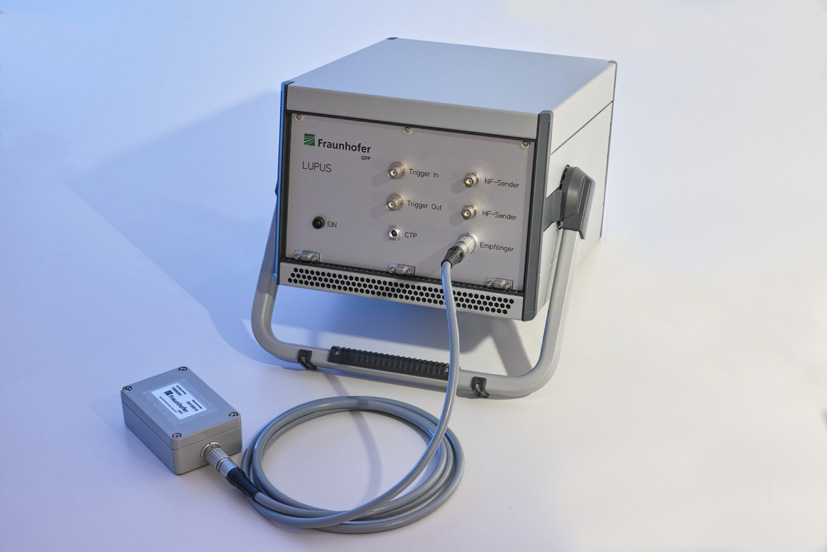


Modern structural components used in automotive, or aerospace industry are subject to extreme requirement profiles which claim, amongst others, weight reduction with simultaneously excellent mechanical properties. This is requested to ensure better crash behavior and adequate characteristics of vibrations and sound attenuation. To comply with such demands, the application of novel materials (CFRP, GFRP, high-tensile steels), or their combination in hybrid components is needed.
Nondestructive testing (NDT) plays a key role for these novel materials, as because of the high demands defects in the final product quickly lead to malfunction. Thus, absolute reliability in defect detection is crucial. As a consequence, NDT procedures intended for this range of applications have to come with fairly sensitive defect detection limits, aside of being easily automatable. At same time they must not influence the material.
One of Fraunhofer IZFP‘s technologies developed for this purpose is the air-coupled ultrasound inspection – a NDT procedure which provides both, noncontact and contamination-free inspection and a high defect resolution. So, the drying of the component which is indispensable after conventional ultrasound inspection can be omitted and the otherwise possible damaging by penetrating couplant is no more problem.
Air-Coupled Ultrasound Pulser LUPUS
By specific modifications the efficiency and the features of the ultrasound electronics available at Fraunhofer IZFP for conventional ultrasound inspection were adapted for air-coupled ultrasound inspection. Characteristic performance features of the LUPUS system relate to the supply of very high transmission power and extremely low-noise pre-amplification. All necessary functions can be applied over a broad frequency range from 50 kHz to 10 MHz. Thus, LUPUS represents a tailor-made inspection system for air-coupled ultrasound inspection.
Features and Benefits
- Transmitter for high-frequency applications, 1 MHz to 10 MHz (3 bursts max.), repetition rate up to 5 kHz depending on frequency, number of bursts and probe impedance
- Transmitter for low-frequency applications, 50 kHz to 1,2 MHz (8 bursts max.), repetition rate up to 5 kHz depending on frequency, number of bursts and probe impedance
- Low-noise pre-amplification up to 40 dB
- Additionally adjustable amplification ranges up to 85 dB
- 8 analog band-pass filters
- Hookup of external filters possible
- Fast data sampling (240 MS/s)
- Up to 512 averages in FPGA
Applications
LUPUS is designed for situations where a tangent inspection cannot be performed at all or can only be performed at high costs. Additionally, a sufficient accessibility for the inspection system is needed. Aside from this, LUPUS technology can be widely adapted to customer-specific demands.
- Defect detection
- Imaging defect detection: pores, delaminations, inhomogeneities, wrinkles (lateral resolution ~ 1 mm)
- Topographic survey: elevation profiles as amplitude contrast / elevation profiles as absolute values (≤ 0,1 mm)
- Analysis of acoustic emissions
- Research and development projects
- Extendible for specific inspection situations (e.g, integration of additional transmitter units for phased array inspections based on air-coupled ultrasound)
 Fraunhofer Institute for Nondestructive Testing IZFP
Fraunhofer Institute for Nondestructive Testing IZFP 